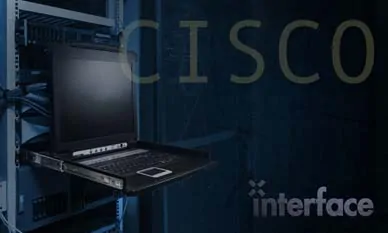
Section 1 – Cisco Unified Contact Center Review
- Contact Center Basics
- CCE Components and Architecture
- Call Flow
- CCE Access Tools
- Discovery 01-1: Navigating CCE Discovery Architecture and Components
- Discovery 01-2: Exploring ICM Configuration Tools
Section 2 – Deploying Basic Call Settings
- Media Routing Domains
- Call Types
- Dialed Numbers
- Discovery 02-1: Administering ICM Dialed Numbers and Call Types
Section 3 – Building a Basic Cisco Unified Contact Center Enterprise Script
- Introduction to Script Editor
- Use Script Editor Nodes
- Understand Variables
- Schedule Scripts
- Manage Additional ICM Scripting Tools
- Discovery 3-01 Prepare a Basic Label Script
- Discovery3-02 Use ICM Tools for ICM Scripts
Section 4 – Configure Basic Agent Functionality
- Introduce Agent Functionality
- Configure Agent Desk Settings
- Configure Skill Groups and Skill Targets
- Configure an Agent
- Configure Agent Targeting Rules
- Build an Agent Routing ICM Script
- Prepare Agent Logon
- Discovery 4-01 Configure ICM for Basic Agent and Skill Group Functionality
- Discovery 4-02 Configure CUCM for Agent Functionality
- Discovery 4-03 Testing Basic Skill Group Functionality in an ICM Script
Section 5 – Configuring Basic Call Treatment and Queuing
- Media Server and Files
- ECC Variables
- Microapps
- Play Media Microapp
- Get Digits Microapp
- Menu Microapp
- Play Data Microapp
- Get Speech Microapp
- Capture Microapp
- Scripting with Microapps
- Discovery 5-01 Media Files and Variables in ICM Scripting
- Discovery 5-02 Basic IVR Scripting with MicroApps
Section 6 – Implementing Precision Routing
- Exploring the Basics
- Migration Path
- Skill Groups vs. Precision Queues
- Configuring Attributes and Precision Queues
- Precision Routing Sample Scenario
- Discovery 6-01 Configure and Implement Precision Routing
Section 7 – Configuring RONA Support
- RONA Function Overview
- RONA Time-out Considerations
- RONA Script Logic
- Discovery 7-01 Configuring RONA
Section 8 – Configuring Agent Teams and Supervisors
- Agent Roles
- Supervisor
- Team Function
- Discovery 8-01 Configure Agent Teams and Supervisors
Section 9 – Administering the Cisco Finesse Desktop
- inesse Server Integration
- Custom Call Variable Layouts
- Phone Books
- Reason Codes
- Workflows
- Discovery 9-01 Finesse Administration
Section 10 – Implementing VXML Applications
- VXML Overview
- CCE VXML Architecture and Logic Flow
- Build Basic Call Studio Project
- Deploy Project, Verify Config
- CCE Scripting for External VXML Applications
- Discovery 10-1: VXML Server Configuration and Call Studio Installation
- Discovery 10-2: Create and Deploy a Cisco Unified Call Studio Project
- Discovery 10-3: Integrate VXML Applications with a CCE Script
Section 11 – Configuring Roles, Departments and Business Hours
- Introducing Roles
- Configuring CCE Administrators
- Configuring Departments
- Defining Business Hours
- Discovery 11-01 Configuring Roles, Departments and Business Hours
Section 12 – Running Unified CC Enterprise Reports with Unified IC
- Introduce and Navigate CUIC
- Reporting Touch Points
- Access CUIC Stock Reports
- Create Custom Dashboards
- Discovery 12-01 Reporting
This section specifies the primary and secondary target audiences of this course by job roles and notes the relevance to each job role. The target audience for this course is channel partners and field support personnel who are responsible for sales, implementation, or administration of a Cisco Unified Contact Center and VRU implementation in customer enterprise networks.
Primary audiences:
- Deployment Engineers
- CCE Administrators
Secondary audiences:
- Technical Sales
- Account and Project Managers
The knowledge and skills that students are expected to have before attending this course are:
- Basic knowledge of networking (Windows A/D, SQL) and components (servers, routers, switch) is helpful but not required.
- Working knowledge of Unified Communications Manager and voice gateways.
- Basic understanding of Cisco Unified Contact Center Enterprise architecture and operation.
Here are recommended Cisco learning offerings that may help students meet these prerequisites:
- Cisco CCEF
- Cisco CLFNDU and Cisco CLCOR recommended.
Upon completing this course, students will be able to meet these objectives:
- Navigate CCE configuration and scripting tools.
- Configure a Dialed Number, Call Type and Media Routing Domain.
- Build a basic ICM script.
- Configure Agents and Skill Groups.
- Configure basic IVR functionality.
- Implement Attributes and Precision Queues.
- Configure RONA using CCE configuration tools.
- Configure and populate an Agent Team and primary Supervisor.
- Improve Agent efficiency through Finesse enhancements.
- Build and test a basic VXML application.
- Implement Roles, Departments and Business Hours.
- Run CUIC Reports using the Reporting tool.

